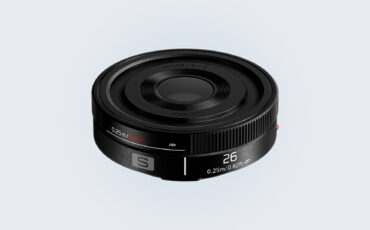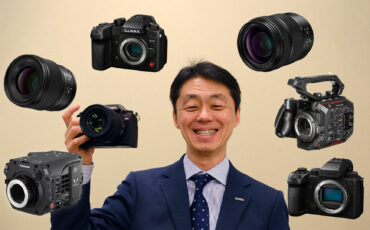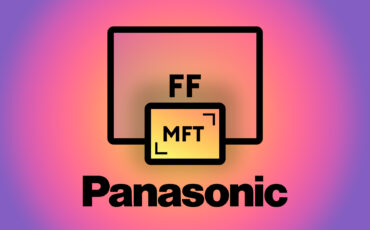
Earlier this year, Panasonic launched their new LUMIX S9. As their smallest full-frame camera, the S9 joins a unique and rather rare breed of compact full-framers. This article will try to figure out the market positioning of the LUMIX S9. You can read all about the camera’s specs and features here. Still, for perspective, we’re talking about a 24-megapixel, full-frame camera capable of 6K open-gate video, 10-bit 4:2:2, and 4K 60P while being smaller than most APS-C cameras around.
The concept of a compact, full-frame camera was always a challenging one. Various manufacturers have tried to produce high-end compacts over the years, but few have been successful. Still, the dream is there, generating demand, which in turn creates a constant flow of unique, clever, and original designs. But why is this concept so tricky?

Bigger is better?
We know that bigger sensors normally yield better technical image qualities. We also know that the best camera is the one you have on you, so we want it to be light and compact. The contradiction between these two vectors sets the stage for a challenging design journey. Many digital high-end compacts opted for a fixed lens solution. FUJIFILM’s X100 series is the poster child here, but recognition is due for some others. Sony’s RX1 series was probably the most compact full-frame offer. The Leica Q is quite popular, at least in Leica’s terms, and there was the lightroom-enabled ZEISS ZX1. Like its L-Mount counterpart, Panasonic took a more challenging path of the interchangeable lens compact camera.
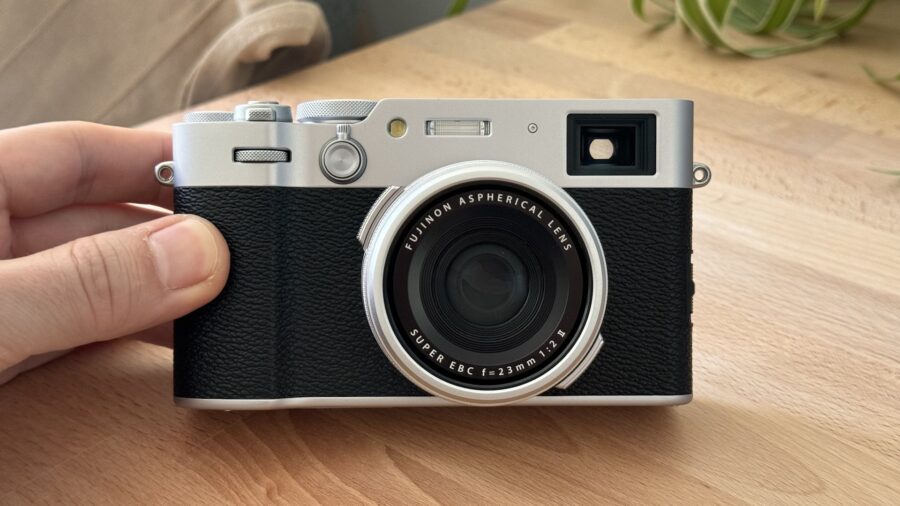
The glass ceiling
The physics are straightforward: The larger the sensor, the larger the image projection circle, the larger the lens. A fixed prime lens may reduce the overall size but will forfeit systematic flexibility. While the LUMIX S9 will struggle to be as compact as an X100VI, it may be used in many more scenarios. One can choose to emphasize extreme compactness with the LUMIX S 26mm F/8, go for shallow depth of field with a SIGMA Art prime, grab a casual zoom, etc. Each choice has its drawbacks, but I personally prefer this approach over the fixed lens path.
The pricing
A quick look at the aforementioned compacts will show another segmentation issue. They’re all quite expensive compared to the LUMIX S9. This puts the S9 in a unique position. On one hand, it’s one of the most affordable full-frame cameras out there. Among the entry-level full-frame cameras, it’s arguably the best-looking option and the most compact. Its flush, rectangular, range-finder-inspired design is arguably more appealing than the utilitarian design of its interchangeable-lens competitors, such as the Canon EOS-R8 and the Sony a7C. Compared with the style-conscious bunch, such as the Leica Q3 or the FUJIFILM X100VI, it’s very affordable and provides an impressive spec list in terms of both video and stills.
So, is it a stylish accessory or a compact workhorse?
As with all interesting questions – there’s no right answer. As with all interesting cameras, the LUMIX S9 can do more than one thing. It will cater to the needs of aspiring content creators, documentary photographers, hybrid enthusiasts, and more. It can also fulfill the niche of a nice-looking accessory that will put smartphone footage to shame.
Unique features
With the LUMIX S9, Panasonic continues their tradition of including high-end features whenever possible. The result is a 6K, open gate, capable compact camera. On the stills side, we get Panasonic’s excellent 96-megapixel multi-shot, making the S9 great for landscape, architecture, and film scanning. And there’s also the tried and true 24-megapixel dual-gain sensor, a standard sweet spot for hybrid creation. The LUMIX S9 also offers a unique LUT system, letting you use your own custom LUTs with ease.
Unique shortcomings
Implementing such specs in a tight body dictates some compromises. Quite harsh shot-length limitation (10min for 6K, 15min for 4K) will limit the S9 use cases. On the still side of things, the lack of a mechanical shutter, combined with a rather slow scan speed, rules off flash photography and may induce some rolling shutter effects. Above all, I think the lack of an EVF may prove very limiting, setting this camera apart from their major competition.
Alternatives
Recent years have brought a rise in entry-level full-frame cameras, as well as the popularity of quality compacts. This means the LUMIX S9 faces some stiff competition:
- Sony ZV-E1: The ZV-E1 offers better autofocus, built-in microphone, and high frame rates. It falls short in terms of resolution (for both stills and video), stabilization, and, arguably, style.
- Sony a7C and a7C II: The older a7C is quite close regarding sensor resolution, but its video only goes as high as 4K 30p 8-bit 4:2:0 at 100 Mbps. The a7C II aims a bit higher in terms of specs and price. For $2,200, it offers a 33-megapixel sensor, 10-bit 4K, and more. Both cameras offer better autofocus, an EVF, and a chunkier grip. None goes as high as 6K video or Super Resolution multi-shot stills and none offers such vast and streamlined LUT functionality
- Canon EOS-R8: The EOS-R8 is, in my opinion, the toughest competition regarding content creation. It has better autofocus, sufficient stills and video quality, cropless 4K 60p, and a significantly faster 40fps burst rate for stills. The S9 has the advantage of mechanical IBIS and a slicker, better-looking design. While not as compact or stylish, the Canon is also more affordable at $1,200.
- Nikon Zf: The Zf challenges the LUMIX S9 in the style department; it harkens to classic Nikon film cameras, specifically the F3. Inside the beautiful design, Nikon managed to squeeze impressive specs. The stabilized 24-megapixel sensor will provide excellent stills and video files, up to 4K 60P at 10-bit, with overall better autofocus.
- SIGMA fp: Comparing any camera with the unique SIGMA fp is tricky. The LUMIX S9 offers a more mainstream approach with better autofocus and IBIS while the SIGMA punches way above its weight regarding unique features. Unique modular design, Cinema DNG recording straight to an SSD drive, and more make it perfect for those who need such features and quite challenging for those who don’t. While somewhat similar, these two target a completely different audience.
- LUMIX S5 II: While not as sleek or as stylish, the LUMIX S5 II provides meaningful upgrades. Virtually unlimited recording, dual card slots, and a decent EVF can make a ton of difference in actual use. The price difference is negligible considering what you get (assuming you can live without the compact design and color options).
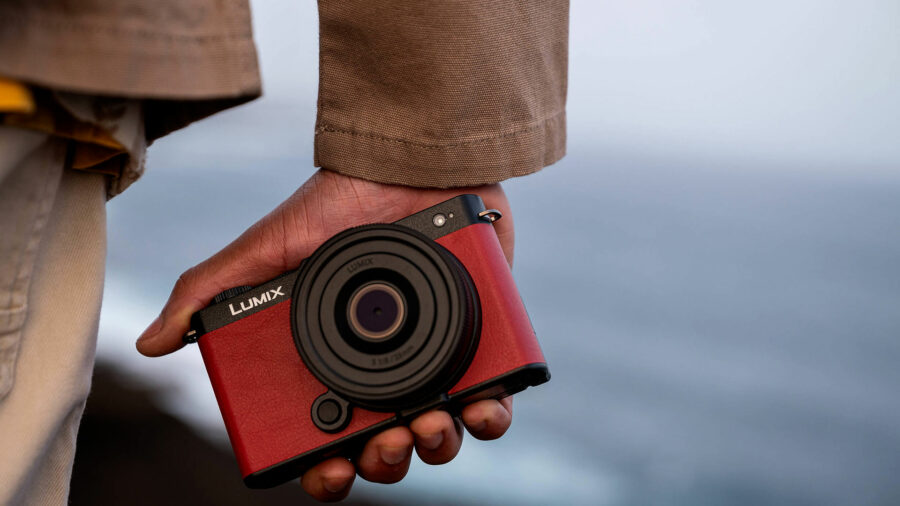
So can the LUMIX S9 be a “video X100VI”?
It seems Panasonic really tried to make the S9 a jack of many trades and even a master of some. It combines some impressive features in an equally impressive form factor. Innovative as it is, the laws of physics are still there, so read into the limitations before jumping on board. This flexible design is what separates it from the FUJIFILM X100IV (our review here). FUJIFILM’s popular APS-C compact is unique for the opposite reasons. It’s decisive in design, aiming for a very specific user experience. While it may be used for various genres, it’s made to replicate a vintage, range-finder-style photography experience. The S9 can sometimes compete with that, with the right lens at least, but it won’t challenge the X100VI in its core market segment. I hope we’ll see a higher-end model someday and have a list of design features that may make it more competitive and hopefully more fun to use.
Will you opt for a LUMIX S9 as your main camera? Would you add one to your set? How will you use it? Let us know in the comments.

